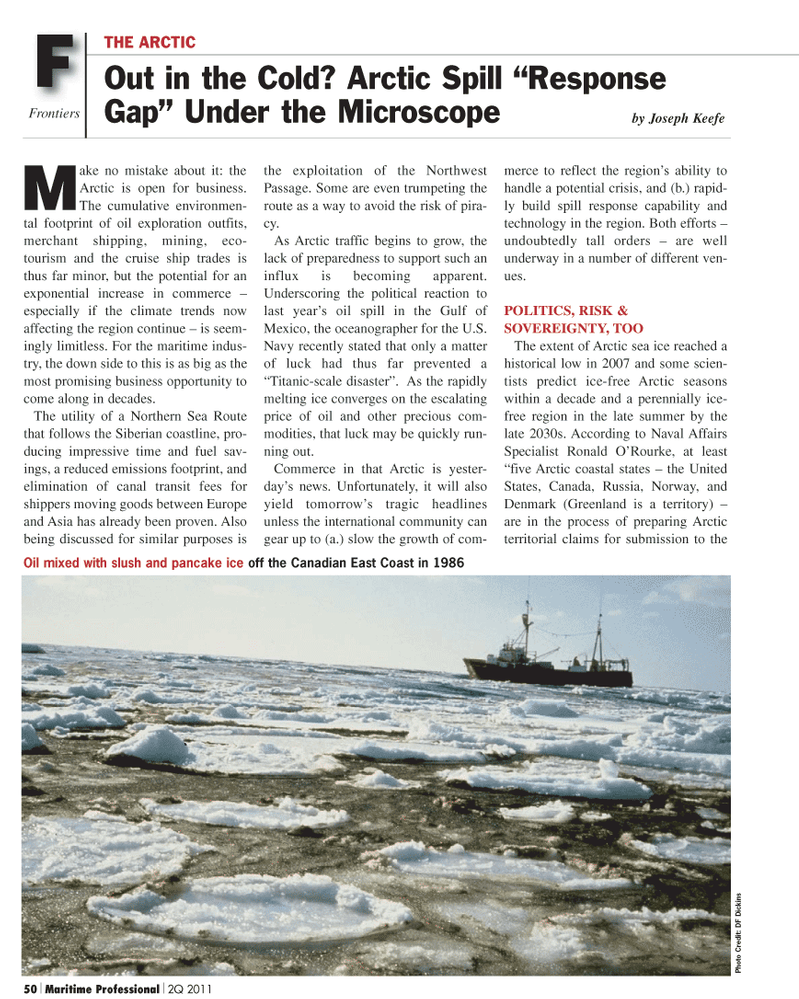
Page 50: of Maritime Logistics Professional Magazine (Q2 2011)
Energy Transportation
Read this page in Pdf, Flash or Html5 edition of Q2 2011 Maritime Logistics Professional Magazine
50 Maritime Professional 2Q 2011
M ake no mistake about it: the
Arctic is open for business.
The cumulative environmen- tal footprint of oil exploration outfits, merchant shipping, mining, eco- tourism and the cruise ship trades is thus far minor, but the potential for an exponential increase in commerce – especially if the climate trends now affecting the region continue – is seem- ingly limitless. For the maritime indus- try, the down side to this is as big as the most promising business opportunity to come along in decades.
The utility of a Northern Sea Route that follows the Siberian coastline, pro- ducing impressive time and fuel sav- ings, a reduced emissions footprint, and elimination of canal transit fees for shippers moving goods between Europe and Asia has already been proven. Also being discussed for similar purposes is the exploitation of the Northwest
Passage. Some are even trumpeting the route as a way to avoid the risk of pira- cy.
As Arctic traffic begins to grow, the lack of preparedness to support such an influx is becoming apparent.
Underscoring the political reaction to last year’s oil spill in the Gulf of
Mexico, the oceanographer for the U.S.
Navy recently stated that only a matter of luck had thus far prevented a “Titanic-scale disaster”. As the rapidly melting ice converges on the escalating price of oil and other precious com- modities, that luck may be quickly run- ning out.
Commerce in that Arctic is yester- day’s news. Unfortunately, it will also yield tomorrow’s tragic headlines unless the international community can gear up to (a.) slow the growth of com- merce to reflect the region’s ability to handle a potential crisis, and (b.) rapid- ly build spill response capability and technology in the region. Both efforts – undoubtedly tall orders – are well underway in a number of different ven- ues.
POLITICS, RISK &
SOVEREIGNTY, TOO
The extent of Arctic sea ice reached a historical low in 2007 and some scien- tists predict ice-free Arctic seasons within a decade and a perennially ice- free region in the late summer by the late 2030s. According to Naval Affairs
Specialist Ronald O’Rourke, at least “five Arctic coastal states – the United
States, Canada, Russia, Norway, and
Denmark (Greenland is a territory) – are in the process of preparing Arctic territorial claims for submission to the
F
Frontiers
Out in the Cold? Arctic Spill “Response
Gap” Under the Microscope by Joseph Keefe
THE ARCTIC
Oil mixed with slush and pancake ice off the Canadian East Coast in 1986
Photo Cr edit: DF Dickins

 49
49

 51
51
